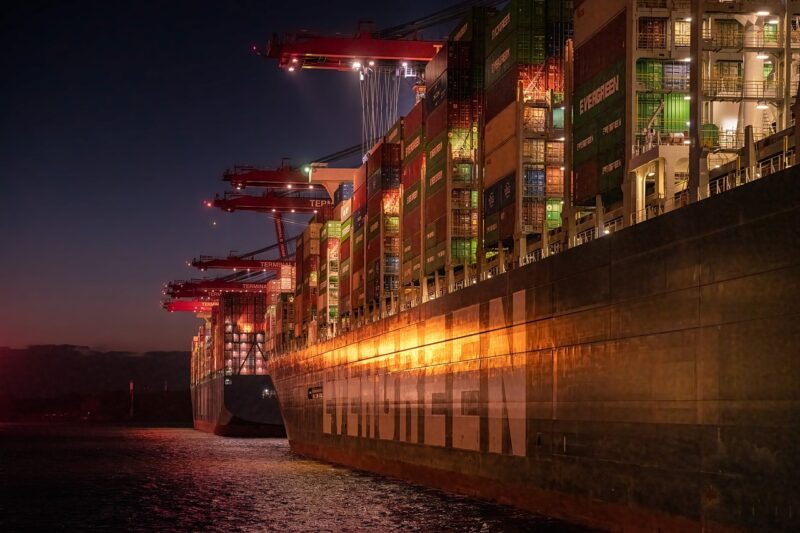Why Waterways Are Making a Comeback as Sustainable Transport Options
November 11, 2024

In recent years, the discussion around sustainable transport has gained immense traction. As cities become increasingly congested and pollution levels rise, alternative transportation methods are being explored. One viable solution that has resurfaced in the conversation is the use of waterways for transport. Historically, rivers and canals served as crucial trade routes, but they were overshadowed by the advent of road and rail networks. Now, as sustainability becomes paramount, waterways are making a significant comeback.
1. The Environmental Imperative
The environmental challenges posed by road transportation are well-documented. Vehicles emit greenhouse gases and contribute significantly to urban air pollution. Waterways, on the other hand, offer a more ecological alternative. Studies show that freight transported by water produces significantly lower CO2 emissions per ton-mile compared to road transport.
Here are several environmental benefits of utilizing waterways:
- Reduced Emissions: Transporting goods via water reduces carbon footprints, particularly when considering long-distance freight movements.
- Energy Efficiency: Barges can transport large quantities of goods using considerably less energy than trucks or trains, making them a more efficient option.
- Less Congestion: By shifting freight from roads to waterways, cities can alleviate some of the traffic congestion, leading to lower overall emissions and improved air quality.
As industries and municipalities turn their gaze toward sustainable practices, waterways present a golden opportunity for achieving environmental goals while also increasing efficiency.
2. Historical Context: A Return to Roots
Waterways were once the lifeblood of trade and transportation. Ancient civilizations utilized rivers for movement of goods and people. The decline of this mode of transport occurred during the Industrial Revolution, as roads became the primary transport infrastructure. However, the resurgence of urban transportation projects and green initiatives has sparked renewed interest in this historically significant resource.
In places like the Netherlands, where the canal system is integral to daily life, waterways never truly lost their prominence. In other areas, cities are reimagining their waterways for modern transportation needs, integrating them into comprehensive urban planning efforts.
3. Economic Benefits of Waterway Transport
Utilizing waterways for transportation isn’t just environmentally friendly; it’s also economically advantageous. As fuel prices rise and supply chains become strained, businesses are seeking the most cost-effective solutions for transporting goods.
Here are some economic advantages:
- Lower Transport Costs: Shipping via barge can often be more cost-effective than trucking or rail transport, especially for bulk goods over long distances.
- Job Creation: The growth of inland waterway commerce could lead to increased employment opportunities in sectors like shipping, logistics, and port services.
- Increased Efficiency: Waterways can facilitate the movement of larger cargo loads at once, thereby speeding up transport times and reducing delays associated with road congestion.
With increasing pressure on businesses to reduce costs and improve sustainability, waterways provide a compelling alternative.
4. Technological Innovations Driving Waterway Use
Advancements in technology are making the use of waterways more attractive. Sophisticated navigation systems, data analytics, and green technologies are revolutionizing how water transport is perceived and executed.
Some noteworthy innovations include:
- Smart Navigation: Modern satellite navigation systems ensure safer and more efficient routes for vessels, improving overall reliability and reducing transit times.
- Eco-friendly Vessels: The development of hybrid or fully electric tugboats is gaining traction, eliminating some traditional emissions associated with water freight.
- Automated Operations: Automation in terms of loading, unloading, and even piloting, brings a level of efficiency hitherto unseen in this sector.
These technological innovations not only enhance operational efficiencies but also promote a greater shift towards integrating waterways within modern transportation networks.
5. Urban Redesign: Integrating Waterways into City Infrastructure
As cities are redesigned to prioritize sustainability and climate resilience, waterways are being reconsidered as vital components of urban transport systems. This shift is happening in various cities around the world:
- Green Urban Areas: Cities are revitalizing their waterway systems by creating waterfront promenades, parks, and commercial areas that promote on-water transport options.
- Public Transport Options: Water taxis, ferries, and leisure cruises are being integrated into public transport networks to provide an alternative to road transport within urban environments.
- Restoration Projects: Many cities are focusing on restoring and maintaining their waterway systems to enhance urban biodiversity and improve water quality, benefitting both communities and ecosystems.
By incorporating water transport into urban planning, cities can improve mobility, enhance community spaces, and provide greener transport solutions.
6. Case Studies: Successful Waterway Transport Initiatives
Several successful waterway transport initiatives provide blueprints for how cities and regions can embrace this mode of transport effectively:
- The Port of Rotterdam: This bustling port integrates an advanced network of barges that carry goods to and from inland Europe, standing as a model for efficient waterway transport.
- Chicago Water Taxi System: Chicago implemented a water taxi service that not only reduces traffic congestion but also serves as a commuting option for residents.
- The Amsterdam Canal System: Amsterdam showcases the successful integration of waterways into daily transportation, supporting both freight and passenger transport while promoting tourism.
These examples demonstrate that with strategic investment, planning, and community involvement, waterways can play a significant role in sustainable transport.
Conclusion: A Sustainable Future on Water
The comeback of waterways as sustainable transport options represents a full-circle moment in transportation history. With pressing environmental concerns, economic needs, and urban redesign initiatives, the potential of waterways is immense. To fully harness this, collaboration among local governments, businesses, and communities is crucial to develop infrastructure and navigate the complexities of modern transport. As we continue to seek alternatives for a sustainable future, waterways offer a compelling, eco-friendly option that is not just practical but also deeply entrenched in our history.
By embracing this solution, we can look forward to a future where rivers, canals, and lakes are as vital to transportation as roads and railways.





